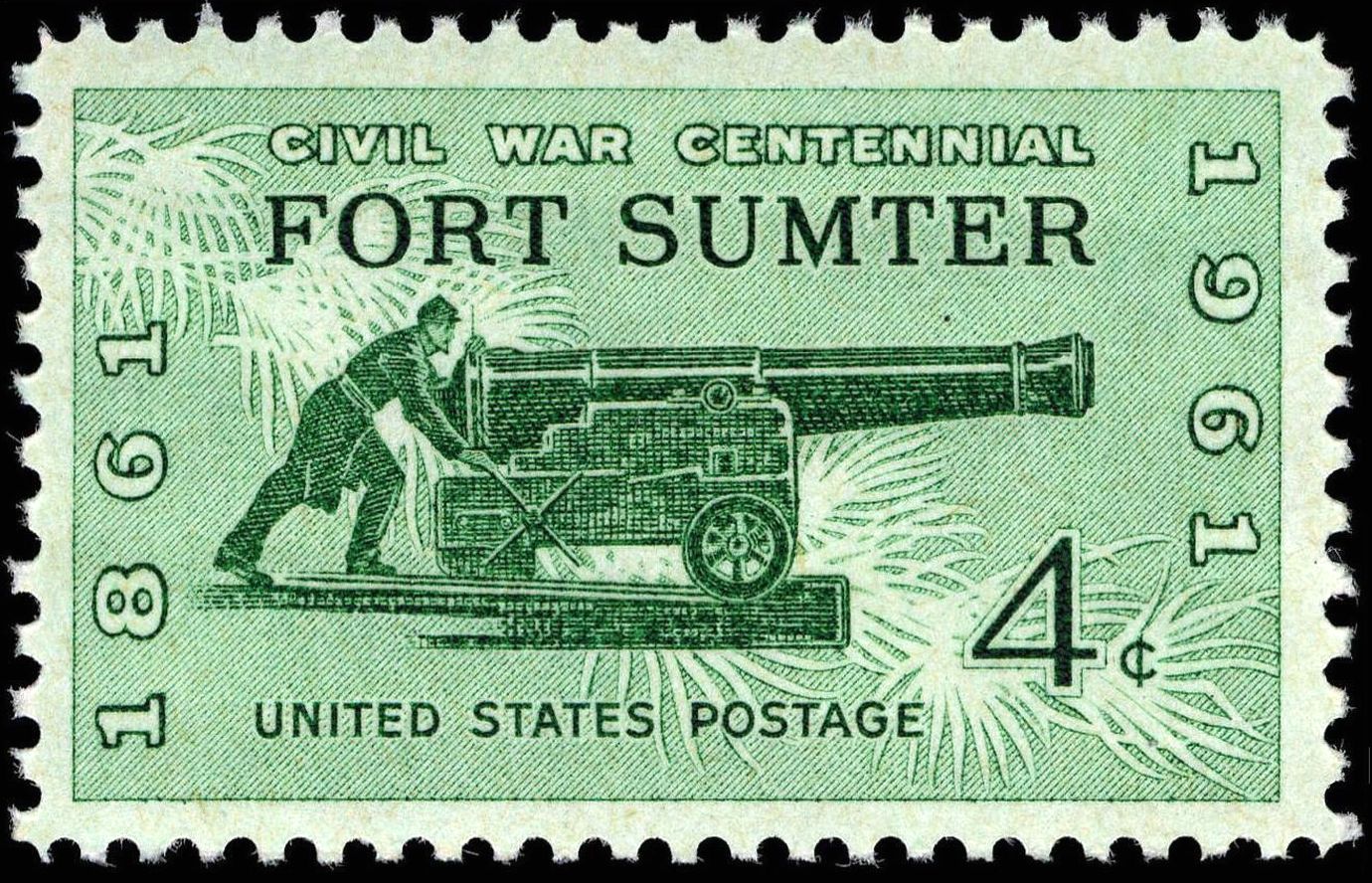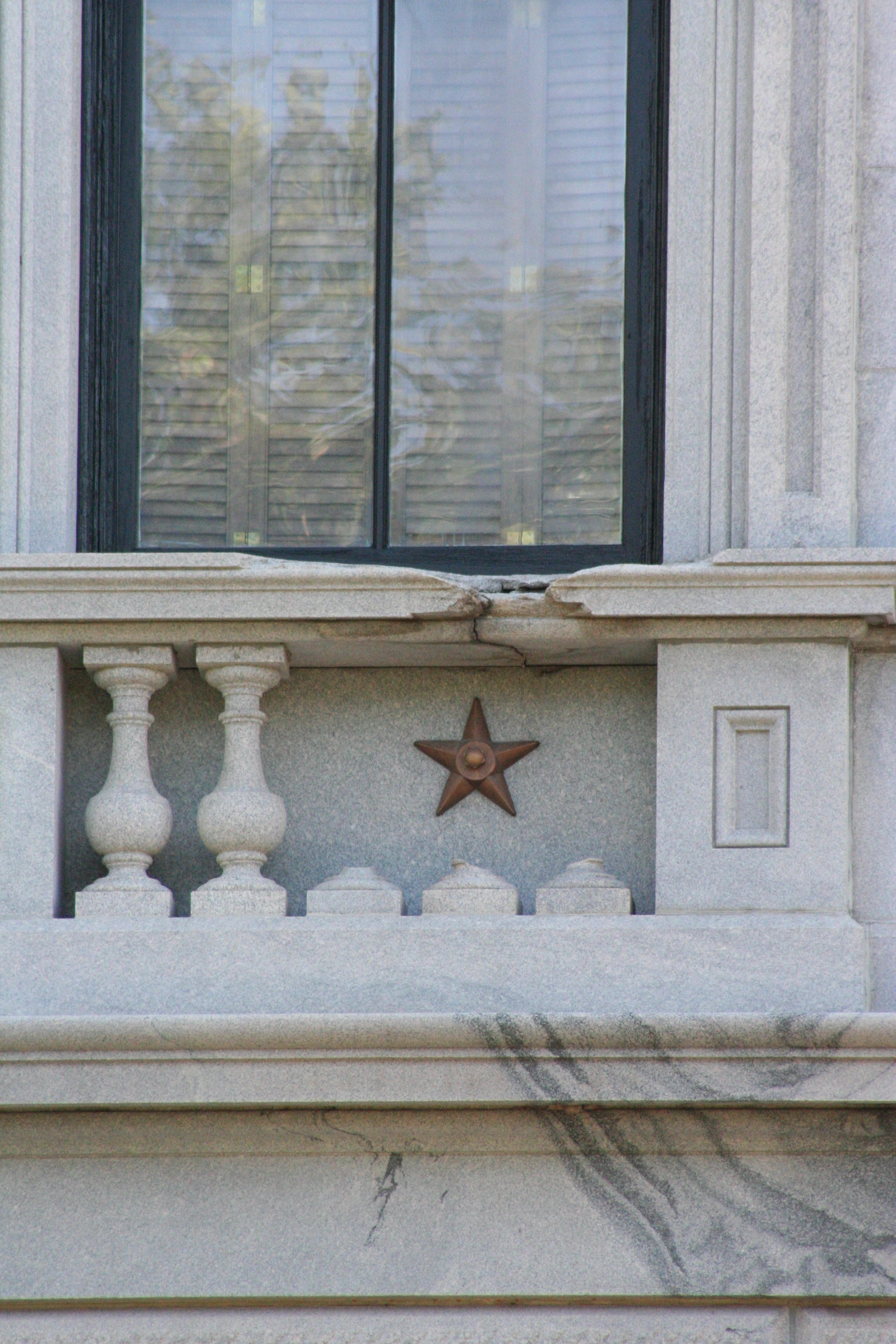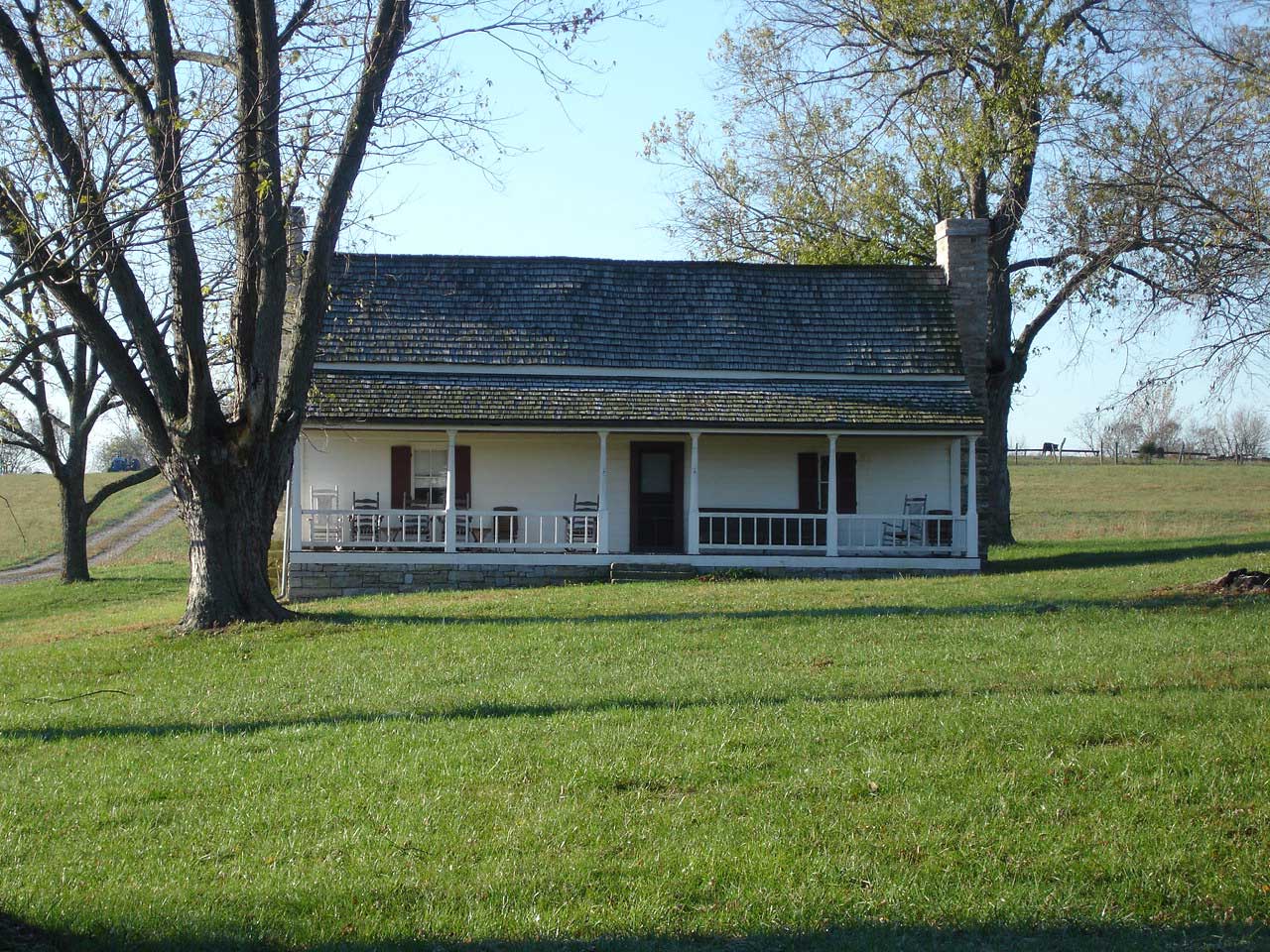|
American Civil War Centennial
The American Civil War Centennial was the official United States commemoration of the American Civil War, also known as the ''War Between the States''. Commemoration activities began in 1957, four years prior to the 100th anniversary of the commencement of hostilities, and ended in 1965 with the 100th anniversary of the surrender at Appomattox. Centennial Commissions The public commemoration of the Civil War commenced with the passage, by Congress in 1957, of a public act creating the United States Civil War Centennial Commission. The Commission was asked to work with, and encourage, the forty-eight U.S. states (especially the states that were in existence at the time of the Civil War) to create state-level commissions to commemorate the war, and to some extent coordinate centennial activities by the private sector. The shadow of ongoing conflict over the Civil Rights Movement affected implementation of these commemorative activities. Neither Congress nor President Dwight D. E ... [...More Info...] [...Related Items...] OR: [Wikipedia] [Google] [Baidu] |
American Civil War
The American Civil War (April 12, 1861 – May 26, 1865; also known by Names of the American Civil War, other names) was a civil war in the United States. It was fought between the Union (American Civil War), Union ("the North") and the Confederate States of America, Confederacy ("the South"), the latter formed by U.S. state, states that had secession, seceded. The central Origins of the American Civil War, cause of the war was the dispute over whether Slavery in the United States, slavery would be permitted to expand into the western territories, leading to more slave states, or be prevented from doing so, which was widely believed would place slavery on a course of ultimate extinction. Timeline of events leading to the American Civil War, Decades of political controversy over slavery were brought to a head by the victory in the 1860 United States presidential election, 1860 U.S. presidential election of Abraham Lincoln, who opposed slavery's expansion into the west. ... [...More Info...] [...Related Items...] OR: [Wikipedia] [Google] [Baidu] |
Robert J
The name Robert is an ancient Germanic given name, from Proto-Germanic "fame" and "bright" (''Hrōþiberhtaz''). Compare Old Dutch ''Robrecht'' and Old High German ''Hrodebert'' (a compound of '' Hruod'' ( non, Hróðr) "fame, glory, honour, praise, renown" and ''berht'' "bright, light, shining"). It is the second most frequently used given name of ancient Germanic origin. It is also in use as a surname. Another commonly used form of the name is Rupert. After becoming widely used in Continental Europe it entered England in its Old French form ''Robert'', where an Old English cognate form (''Hrēodbēorht'', ''Hrodberht'', ''Hrēodbēorð'', ''Hrœdbœrð'', ''Hrœdberð'', ''Hrōðberχtŕ'') had existed before the Norman Conquest. The feminine version is Roberta. The Italian, Portuguese, and Spanish form is Roberto. Robert is also a common name in many Germanic languages, including English, German, Dutch, Norwegian, Swedish, Scots, Danish, and Icelandic. It can be ... [...More Info...] [...Related Items...] OR: [Wikipedia] [Google] [Baidu] |
Lost Cause Of The Confederacy
The Lost Cause of the Confederacy (or simply Lost Cause) is an American pseudohistorical negationist mythology that claims the cause of the Confederate States during the American Civil War was just, heroic, and not centered on slavery. First enunciated in 1866, it has continued to influence racism, gender roles and religious attitudes in the South to the present day. Lost Cause proponents typically praise the traditional culture of honor and chivalry of the antebellum South. They argue that enslaved people were treated well and deny that their condition was the central cause of the war, contrary to statements made by Confederate leaders, such as in the Cornerstone Speech. Instead, they frame the war as a defense of states' rights, and as necessary to protect their agrarian economy against supposed Northern aggression. The Union victory is thus explained as the result of its greater size and industrial wealth, while the Confederate side is portrayed as having great ... [...More Info...] [...Related Items...] OR: [Wikipedia] [Google] [Baidu] |
Bruce Catton
Charles Bruce Catton (October 9, 1899 – August 28, 1978) was an American historian and journalist, known best for his books concerning the American Civil War. Known as a narrative historian, Catton specialized in popular history, featuring interesting characters and historical vignettes, in addition to the basic facts, dates, and analyses. His books were researched well and included footnotes. He won a Pulitzer Prize during 1954 for ''A Stillness at Appomattox'', his study of the final campaign of the war in Virginia. Early life Charles Bruce Catton was born in Petoskey, Michigan, to George R. and Adela M. (Patten) Catton, and raised in Benzonia, Michigan. His father was a Congregationalist minister, who accepted a teaching position in Benzonia Academy and later became the academy's headmaster. As a boy, Catton first heard the reminiscences of the aged veterans who had fought in the Civil War. In his memoir, ''Waiting for the Morning Train'' (1972), Catton explained how th ... [...More Info...] [...Related Items...] OR: [Wikipedia] [Google] [Baidu] |
Names From The War
''Names from the War'' is a long poem about the American Civil War by Civil War historian Bruce Catton, published in 1960. The context is the Civil War Centennial. It was set to music by Alec Wilder, using folk melodies from Carl Sandburg's American Songbook. It calls for narrator, chorus, brass quintet, and woodwind quintet. It was released on LP in 1961, with Dave Garroway as the narrator. It has apparently never been performed in a concert setting. In it, Catton talks about "quiet names of doom", which previously had no special significance, but now "they will live as long as America remembers.". These are names— Sharpsburg and Spotsylvania begin the list—from postmarks on envelopes containing letters soldiers sent to their families, although sometimes the names arrived on official death notices before the letters did. Geographical names like "Missionary Ridge Missionary Ridge is a geographic feature in Chattanooga, Tennessee, site of the Battle of Missionary Ridg ... [...More Info...] [...Related Items...] OR: [Wikipedia] [Google] [Baidu] |
Alex Wilder
Alex Wilder is a fictional character appearing in American comic books published by Marvel Comics. The character is introduced in the series '' Runaways''. Alex Wilder was portrayed by Rhenzy Feliz in the Hulu television series '' Runaways'' which is connected to the Marvel Cinematic Universe. Publication history Alex Wilder was created by author Brian K. Vaughan and artist Adrian Alphona where debuted in ''Runaways'' #1 with most of the other main characters.''Runaways'' #1 Like every member of the original Runaways, he is the son of evil villains with special abilities; in Alex's case, gang mob bosses. Alex is the team's de facto leader in the title's first volume. Unlike the rest of the team, Alex does not possess powers of any kind but is a child prodigy in the fields of logic and strategy. Alex eventually reveals that he is the parents' mole, and meets his demise when he is blown into ashes by the Gibborim. Fictional character biography Alex is the first character to be i ... [...More Info...] [...Related Items...] OR: [Wikipedia] [Google] [Baidu] |
South Carolina State House
The South Carolina State House is the building housing the government of the U.S. state of South Carolina, which includes the South Carolina General Assembly and the offices of the Governor and Lieutenant Governor of South Carolina. Located in the capital city of Columbia near the corner of Gervais and Assembly Streets, the building also housed the Supreme Court until 1971. The State House is in the Classical Revival style; it is approximately tall, long, wide. It weighs more than and has of space. Old Carolina State House The old State House was constructed between 1786 and 1790. James Hoban, a young Irishman who emigrated to Charleston shortly after the Revolution, was the architect. Upon the recommendation of Henry Laurens, President Washington engaged him to design the executive mansion in Washington. Old pictures of the two buildings show architectural similarities. The Old State House was destroyed during the burning of Columbia in 1865. Historic photos Archi ... [...More Info...] [...Related Items...] OR: [Wikipedia] [Google] [Baidu] |
Flags Of The Confederate States Of America
The flags of the Confederate States of America have a history of three successive designs during the American Civil War. The flags were known as the "Stars and Bars", used from 1861 to 1863; the "Stainless Banner", used from 1863 to 1865; and the "Blood-Stained Banner", used in 1865 shortly before the Confederacy's dissolution. A rejected national flag design was also used as a battle flag by the Confederate Army and featured in the "Stainless Banner" and "Blood-Stained Banner" designs. Although this design was never a national flag, it is the most commonly recognized symbol of the Confederacy. Since the end of the Civil War, private and official use of the Confederate flags, particularly the battle flag, has continued amid philosophical, political, cultural, and racial controversy in the United States. These include flags displayed in states; cities, towns and counties; schools, colleges and universities; private organizations and associations; and individuals. The battle fl ... [...More Info...] [...Related Items...] OR: [Wikipedia] [Google] [Baidu] |
Perryville Battlefield State Historic Site
Perryville Battlefield State Historic Site is a park near Perryville in Boyle County, Kentucky. The park continues to expand with purchases of parcels by the Office of Kentucky Nature Preserves' Kentucky Heritage Land Conservation Fund and the American Battlefield Trust. An interpretive museum is located near the site where many Confederate soldiers killed in the Battle of Perryville were buried. Additionally, monuments, interpretive signage, and cannons mark notable events that occurred during the battle. The site became part of the Kentucky State Park System in 1936. Battle The battle was fought on October 8, 1862, between the Union Army of the Ohio, commanded by Maj. Gen. Don Carlos Buell, and the Confederate Army of Mississippi, commanded by Gen. Braxton Bragg. The battle was a tactical victory for the Confederates, but a strategic victory for the Union because Bragg withdrew his army from Kentucky, which remained in Union hands for the remainder of the war. Perryville ... [...More Info...] [...Related Items...] OR: [Wikipedia] [Google] [Baidu] |
Wilson's Creek National Battlefield
Wilson's Creek National Battlefield, located near Republic, Missouri, preserves the site of the Battle of Wilson's Creek. Fought on August 10, 1861, the battle was the first major American Civil War engagement west of the Mississippi River. In the battle, a Confederate army commanded by Benjamin McCulloch and Sterling Price defeated a smaller Union army commanded by Nathaniel Lyon. However, the Confederates were unable to hold much of Missouri, and a Confederate defeat at the Battle of Pea Ridge effectively solidified Union control of the state. Major features include a five-mile automobile tour loop, the restored 1852 Ray House, and "Bloody Hill", the site of the final stage of the battle. The site is located near Republic in southwestern Missouri just southwest of the city of Springfield. It has been a unit of the National Park Service since 1960, and was listed on the National Register of Historic Places in 1966. Battle at Wilson's Creek In early 1861, President Abraham ... [...More Info...] [...Related Items...] OR: [Wikipedia] [Google] [Baidu] |
Pea Ridge National Military Park
Pea Ridge National Military Park is a United States National Military Park located in northwest Arkansas near the Missouri border. The park protects the site of the Battle of Pea Ridge, fought March 7 and 8, 1862. The battle was a victory for the Union, and helped it gain control of the crucial border state of Missouri. Administrative history The Pea Ridge National Military Park was created by an act of Congress in 1956 to preserve the battlefield of the 1862 Battle of Pea Ridge. It was dedicated as a national park during the nation's Civil War Centennial in 1963.Warren, Steven L. Pea Ridge National Military Park, The Encyclopedia of Arkansas History and Culture. In 1956, the Arkansas congressional delegation proposed legislation to make Pea Ridge a national military park. This was a major breakthrough in American Civil War battlefield preservation. At that time, under the National Park Service classification system, only should have been preserved, along with a monument. On ... [...More Info...] [...Related Items...] OR: [Wikipedia] [Google] [Baidu] |
American Civil War Reenactment
American Civil War reenactment is an effort to recreate the appearance of a particular battle or other event associated with the American Civil War by hobbyists known (in the United States) as Civil War reenactors, or living historians. Although most common in the United States, there are also American Civil War reenactors in Canada, the United Kingdom, Germany, Australia, Italy, Denmark, Sweden, and Poland. History Reenacting the American Civil War began even before the real fighting had ended. Civil War veterans recreated battles as a way to remember their fallen comrades and to teach others what the war was all about. The Great Reunion of 1913, celebrating the 50th anniversary of the Battle of Gettysburg, was attended by more than 50,000 Union and Confederate veterans, and included reenactments of elements of the battle, including Pickett's Charge.Heiser. Modern reenacting is thought to have begun during the 1961–1965 Civil War Centennial commemorations. R ... [...More Info...] [...Related Items...] OR: [Wikipedia] [Google] [Baidu] |



.png)



